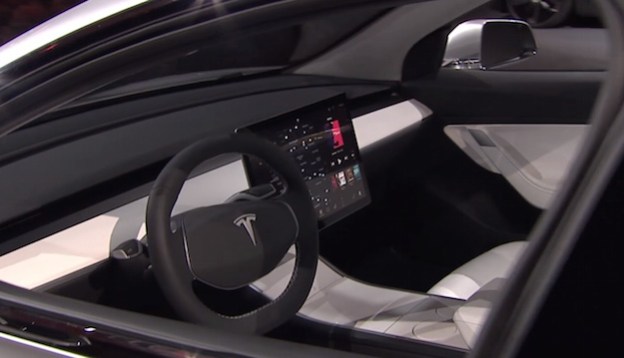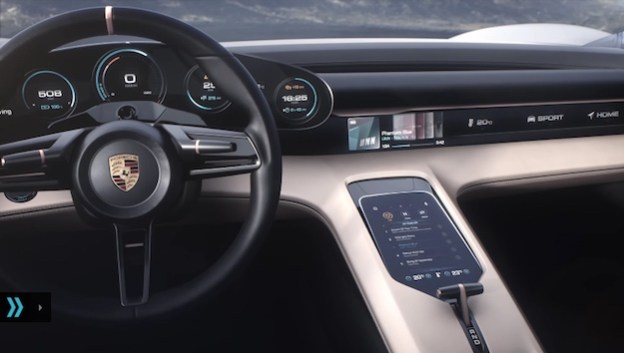A new report from Electrek relays that Tesla recently hired Félix Godard, a young designer responsible for the interior design of Porsche’s deservedly hyped Mission E. What makes Tesla’s hiring of Godard particularly noteworthy is that he may help Tesla address a longstanding complaint about the company’s fleet of cars, namely that their fit and finish isn’t up to par with traditional luxury brands. Word of Godard’s transition from Porsche to Tesla was confirmed via his LinkedIn profile.
DON’T MISS: Porsche reveals its Tesla-killer electric car
Notably, Godard’s expertise suggests that he will be an important part of the team responsible for fleshing out the curiously designed dash on the Model 3. If you recall, the Model 3 that Tesla showcased not too long ago completely lacked an instrument cluster. While some speculated that Tesla perhaps didn’t have time to implement a digital dashboard ahead of the Model 3 unveiling, a Tesla representative has since confirmed that Tesla is not planning to add an instrument cluster to the final production model.

This of course begs the question: Does Tesla have a trick up its sleeve or is the Model 3 design as it stands today all we’re going to get. Thankfully, the answer appears to be the former.
For starters, Elon Musk, when asked about the lack of a traditional dashboard via Twitter, responded that it will all “make sense after part 2 of the Model 3 unveil.”
This had reasonably led some to believe that Tesla has plans to implement a HUD on the Model 3. And interestingly enough, Godard implemented a forward-thinking dash and holographic display on the Mission E concept Porsche unveiled last year.
“Instruments are intuitively operated by eye-tracking and gesture control,” Porsche boasted in a press release last year, “some even via holograms – highly oriented toward the driver by automatically adjusting the displays to the driver’s position.”

“The instrument cluster shows five round instruments – they can be recognized as Porsche, but they are displayed virtually in OLED technology,” the Daily Mail adds. “If the driver sits lower, higher or leans to one side, the 3D display of the round instruments reacts and moves with the driver. This eliminates situations in which the steering wheel blocks the driver’s view of certain key information, for instance. All relevant information such as vehicle speed is always within the driver’s line of sight.”
Porsche’s full summary of the holographic display reads as follows:
The entire dashboard is chock full of new ideas. Its division into two three-dimensionally structuring layers reinforces the impression of lightness and clarity. The upper layer integrates the driver’s display, and between the levels there is a holographic display that extends far into the passenger’s side. It shows individually selectable apps, which are stacked in virtual space and arranged by priority with a three-dimensional effect. The driver – or passenger – can use these apps to touch-free control primary functions such as media, navigation, climate control, contacts and vehicle. The desired symbol is activated by gestures that are detected by sensors. A grasping gesture means select, while pulling means control. Moreover, driver or passenger can use a touch display on the centre console to control secondary functions such as detailed information menus.
All that said, it’s a safe bet that the final production version of the Model 3 will be even more impressive than what Tesla showed off just a few weeks ago.
A video highlighting the design of the Mission E can be seen below.
